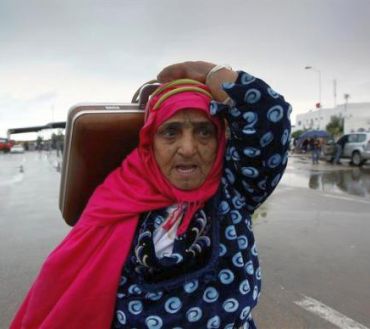
After six months of struggle, the battle to oust Libyan ruler Muammar Gaddafi from his throne is nearing its end.
Let's take a look at some of the important developments leading to the rebel capture of Libyan capture of Tripoli.
February 15, 2011: Protests begin in the eastern port city of Benghazi, Libya, and spread to Zintan, al Bayda and Quba. Security forces respond with live fire from snipers and helicopter gunships. Within a week, there are reports of 1,000 people dead.
Click on NEXT to go further...
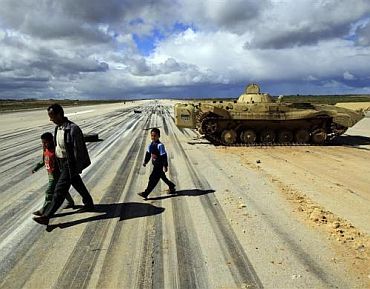

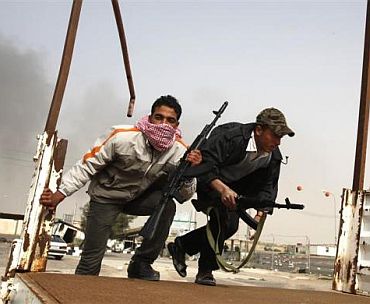
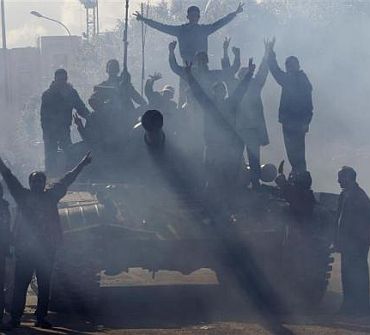
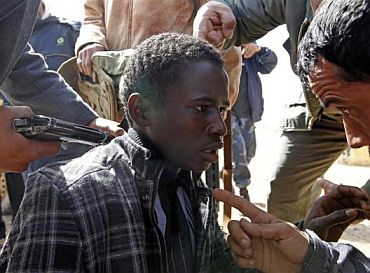
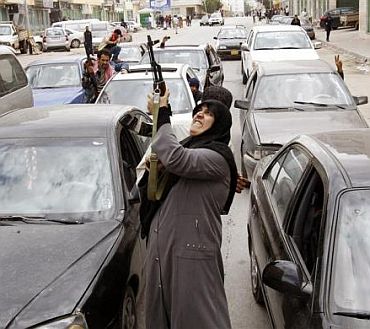
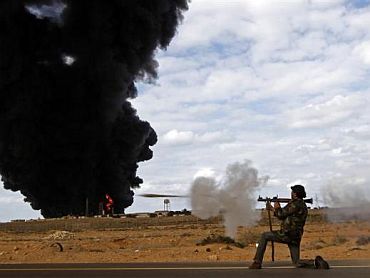
March 24: NATO agrees to take command of the mission enforcing a no-fly zone over Libya.
March 30: Moussa Koussa, the Libyan Foreign Minister, arrives in Britain and says he is defecting from Gaddafi's regime. Libya diplomats are expelled from London.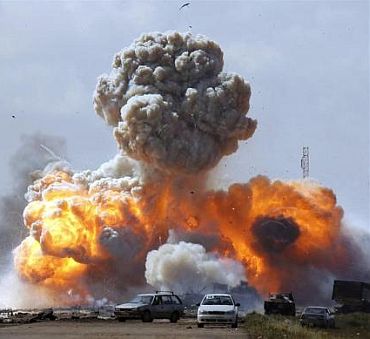
March 31: NATO announces that it has begun Operation Unified Protector in Libya, including an arms embargo, a no-fly zone and "actions to protect civilians and civilian centres."
April 6: Gaddafi urges US President Barack Obama to end the NATO bombing of his war-torn country, making an appeal in a letter to the American president. Gaddafi asks Obama to stop what he calls the "unjust war against a small people of a developing country," adding that those in the opposition are terrorists and members of Al Qaeda, the official said.
April 29: In a speech, Gaddafi urges NATO to negotiate an end to airstrikes, accusing the international coalition of killing civilians and destroying the nation's infrastructure in a bid to take over its oil production.
April 30: NATO launches a missile attack on a house in Tripoli. The attack kills one of Gaddafi's sons, Saif al-Arab Gadhafi, and several of his grandchildren.
Click on NEXT to go further...
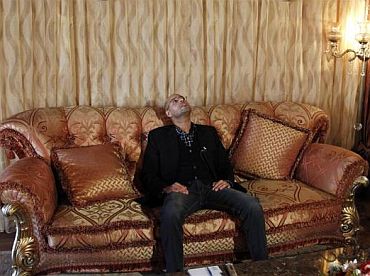
April 30: Gaddafi's youngest son Saif al-Arab is killed by a Nato airstrike, along with three grandchildren. The following day, the British and Italian Embassies in Tripoli are attacked.
May 8: Al-Obeidy, who garnered worldwide attention for her vocal allegations of rape against Gaddafi's regime, says she has fled Libya, fearing for her safety. She crossed into Tunisia with the help of a defecting military officer and his family. A month later, she finds temporary sanctuary in Qatar before being deported back to Libya.
May 22: The European Union opens an office in the rebel-held Libyan city of Benghazi.
Click on NEXT to go further...

June 1: NATO announces that it is extending its mission in Libya for 90 days. Libya's oil minister defects to Italy. He left because the suffering of the country's people had become unbearable.
June 14: South African President Jacob Zuma lashes out at NATO, arguing that the organization is misusing the United Nations resolution meant to protect civilians "for regime change, political assassinations and foreign military occupation."
July 15-27: The United States and the United Kingdom join countries recognising the Transitional National Council as "the legitimate governing authority" in Libya.
Click on NEXT to go further...
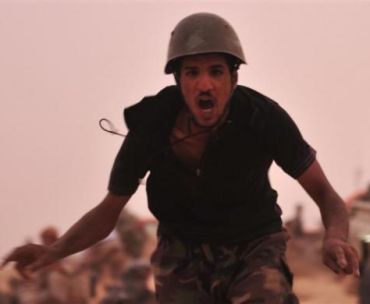
June 27: The International Criminal Court in The Hague issues a warrant for the arrest of Gaddafi, his son Saif al-Islam and his head of intelligence.
July 28: Rebel leaders announce that the commander of Libya's rebel army was assassinated in Benghazi along with two senior officers, just hours after claiming big successes on the battlefield.
Click on NEXT to go further...
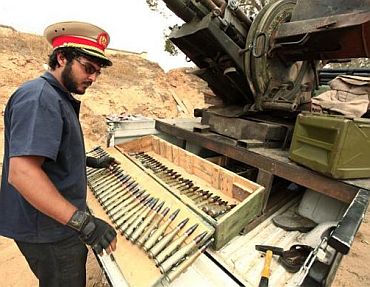
August 9: Libyan Transitional National Council Chairman Mustafa Abdel Jalil dismisses the rebels' 14-member executive board, a spokesman for the council says.
August 15: Gaddafi urges Libyans to fight opposition forces and "cleanse this sweet and honorable land." In a speech broadcast on state television, Gaddafi says: "The strikes will be over and NATO will be defeated. Move always forward to the challenge; pick up your weapons; go to the fight in order to liberate Libya inch by inch from the traitors and from NATO. Be prepared to fight if they hit the ground."
Click on NEXT to go further...

August 16: Col Roland Lavoie, a spokesman for NATO's military operation, tells reporters that "anti-Gaddafi forces are now assuming control of the key approaches to Tripoli." A spokesman for the Gaddafi government offers a different view. "We are doing very well," spokesman Musa Ibrahim says.
August 18: Libyan Prime Minister al-Baghdadi al-Mahmoodi says the military is "powerful enough to finish this battle" to its advantage, but warned that the cost would be too high, calling again for dialogue to resolve the crisis peacefully rather than militarily. Meanwhile, a brother of Musa Ibrahim, the spokesman for the government in Tripoli, was killed Thursday night by NATO aircraft, a Libyan government official said.
August 19: US officials say Gaddafi may be making preparations for a "last stand" in Tripoli as a monthlong NATO air campaign continues amid reports of rebel advances.
Click on NEXT to go further...

August 21: In an audio-only address on state television, Gaddafi calls on Libyans to rally to the defense of Tripoli, as rebels capture two of his sons. The International Criminal Court says it plans to negotiate the transfer of Saif al-Islam Gaddafi who is wanted for crimes against humanity, along with his father. Rebels declare Sunday "Day 1," saying "Gaddafi is already finished," while NATO says the regime was "crumbling." Government spokesman Musa Ibrahim says some 1,300 people are killed and about 5,000 wounded in 12 hours of fighting.
August 22: A rebel spokesman says Libya is now under the control of the opposition The holdout now: A barrage of clashes with Gaddafi forces on the leader's home turf, Tripoli.
Where is Gaddafi? Click on MORE...